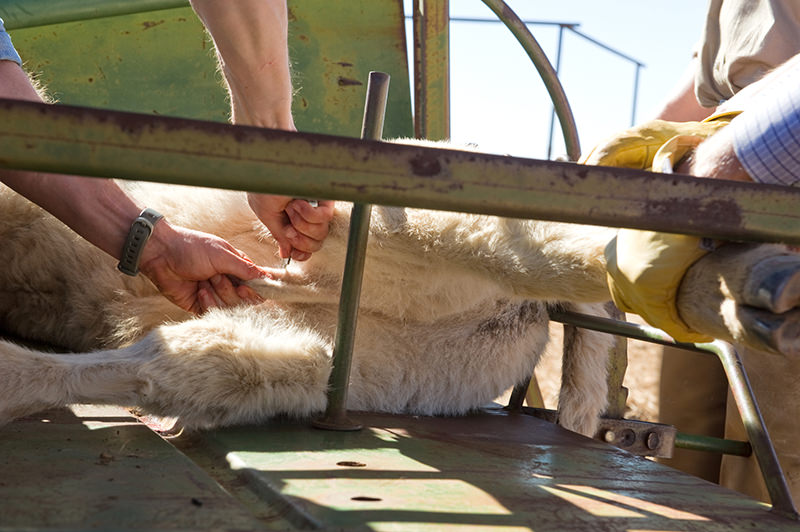
Farmers are well known for abiding by the rule waste not, want not—and for good reason. Typically tight budgets and a feast-versus-famine roller coaster of resources dictates that you use what you have on hand. This means eating lots of leftover seasonal fruits and veggies, patching that wheelbarrow yourself, using bailing twine for just about everything, and using scraps for second intentions.
This last one gives me pause when it comes to veterinary medicine. You see, springtime is the season not only for babies but also for castrating said babies. Numerous bull calves are made into steers every spring as routine, and the same goes for colts, ram lambs and buck kids. Early spring and late fall are the best times to castrate farm animals; this avoids fly season and extreme temperatures.
Castration Method 1: Banding
For young calves, lambs and goat kids, “banding” is a common non-surgical method of castration. A sturdy rubber band is placed around the top of the scrotum. This cuts off the blood supply to the testicles. Within a few days, the scrotum withers and after about a week, it falls off. The wound usually heals itself without medical attention as long as the animals are kept relatively clean and dry. Other than making sure the animal is up to date on its tetanus vaccination, this is a fairly innocuous castration method elected by farmers, as it is easily performed at the farm without the help of a veterinarian. (Banding is never used on horses because they have a more complicated blood supply to the testicles and are more prone to serious infection.)
Banding Method 2: Surgery
The other method for castration is surgical, meaning that the skin of the scrotum is cut, either by a scalpel or a specialized castration instrument, such as an emasculator, an emasculatome or a Newberry castrating knife. Understandably, with surgical castration, you are immediately left with two things: an animal missing a pair of testicles and the testicles.
Rocky Mountain Oysters
Here comes the part of waste not want not.
A few years back, I was on a farm call where nothing was wasted. I was originally called to treat a group of calves for pink eye. While I was there, the family asked if I had time to castrate the calves, too. I did have time that particular day and explained the different options for castration but was cut off abruptly: no, we want you to do it surgically, said the family. Grandma wants oysters for dinner.
Now, I wasn’t completed naïve. I know they didn’t mean bivalve mollusks. In this particular context, they meant Rocky Mountain Oysters: cooked testicles. Specifically, bull testicles.
“Oysters” have a long history in the ranching industry. Out West, there can be hundreds of calves needing castration and vaccination over a few busy days. At the end of the work, some ranches will celebrate with a meal: fresh fried “oysters,” cocktail sauce or ketchup, and your choice of alcoholic beverage. All in a day’s work!
I proceeded this humid spring morning to surgically castrate three bull calves. During the procedures, out walked Grandma, a solemn elderly woman in a bright-red sweater carrying a plastic bucket filled with water. I was asked to toss the testicles I had just removed into the bucket. They went with a splash. The newly minted steers each got up a little stiff and walked off into the pasture bow-legged with their feelings hurt. As I cleaned off my equipment, I had to ask Grandma: how does one cook testicles?
“Eh?” she said, squinting up at me.
“HOW DO YOU COOK TESTICLES?”
“Well, you slice them,” she said very matter-of-factly. “Then toss them in cracker crumbs and deep fry them.”
There it was. A home recipe. Sounded simple enough. And anything tastes good fried, right? I’ll admit, I left feeling a bit hungry.




